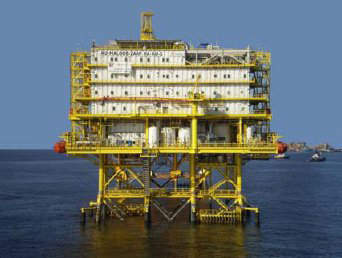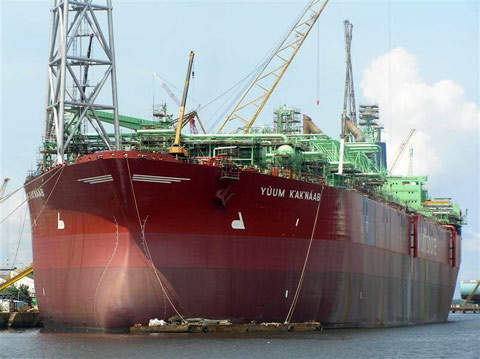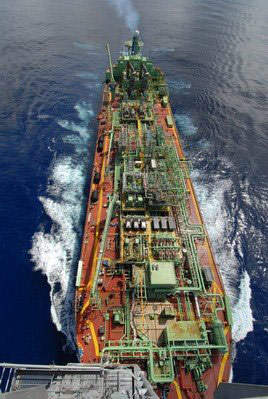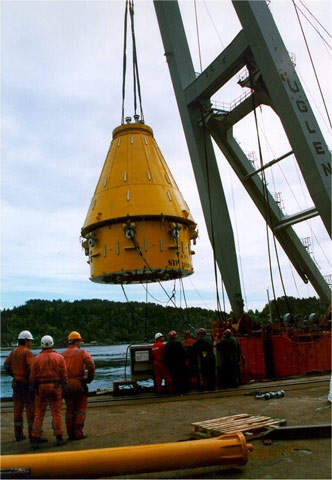In 2002, Mexican state oil company Pemex embarked on an eight-year project to boost heavy crude output from its Ku-Maloob-Zaap (KMZ) oilfield in the Bay of Campeche, Gulf of Mexico.
A Mex$26bn ($1.96bn) investment was made by 2008, raising the level of heavy crude output from 329,000bpd of oil and 172.1mmscf per day of gas to 800,000bpd and over 300mmscf per day to offset the production drop at Cantarell, one of the world’s largest oilfields. Cantarell and KMZ were responsible for 54% of Mexico’s total crude production in 2010.
Ku-Maloob-Zaap is located off the coast of Tabasco and Campeche, 105km (65 miles) north-east of Ciudad del Carmen, Campeche. It covers an area of 121km2, and includes five fields: Ku, Maloob, Zaap, Bacab, Lum and Zazil-Ha.
The Ku field was discovered in 1980, the Maloob field in 1984 and Zaap in 1991. First oil from the Ku field was produced in 1981.
The Ku, Maloob and Zaap fields produce from the Kimmeridgian, Lower Paleocene-Upper Cretaceous and Middle Eocene reservoirs. Total reserves of the field have been put at 4.9 billion barrels. A key strategy is injecting natural gas and nitrogen into the wells to provide an enhanced oil recovery drive. The field lies in 100m of water.
Developing the KMZ field
The KMZ development included drilling 82 wells, four of which are nitrogen injectors, and the construction of 17 platforms: seven drilling, four production, four accommodation, one telecommunication and one processing. There are also 42 pipelines totalling 189km in length.
The KMZ field development was given a boost in 2007 with the first-ever shipshape production floater in the Gulf of Mexico. Oslo-based owner-operator BW Offshore converted the ultra-large crude carrier Berge Enterprise into the 2.2 million barrel capacity Yuum K’ak’ Naab (Lord of the Sea). It can produce 200,000bpd of crude oil and 120 million cubic feet of natural gas a day.
The vessel, which is designed for a throughput of 600,000bpd of oil and 120mmscf perday of gas, will act as a hub and export terminal for the next 15 years in the Bay of Campeche. After processing, the oil and gas are transported ashore via tankers and transport pipelines.
KMZ FPSO
The Yuum K’ak’ Naab was converted at the Sembawang Shipyard in Singapore by Sembcorp Marine under an $88m contract. The 360,700dwt FPSO is 340m long, 65m wide and 31.5m tall.
Originally built by Mitsui, the conversion project encompassed the inclusion of an internal disconnectable submerged turret system provided by APL. This 12-line mooring system is connected to 35m pile anchors, and the wellstream enters via eight 15in flexible risers and a midwater arch.
Other changes include the installation of topsides modules, the expansion of the living quarters to accommodate 110 personnel and a flare tower.
A feature of the KMZ field is that the oils have different viscosities. Ku has an API of 22°, while the Maloob and Zaap fields have an API of 12°. The Yuum K’ak’ Naab has segregated storage facilities with one tank able to store one million barrels of blended crude similar in chemistry to Cantarell’s 21°API, known as the Maya blend.
The compression, fuel gas amine treatment and separation modules were provided by Lamprell, and Dresser supplied two LM 2500 25MW dual-fuel turbines. The power generators came from Dresser-Rand and the waste heat recovery units were supplied by Kanfa-Tec.
The fiscal oil offloading metering system, provided by Daniels, was based on a four-path ultrasonic Caldon meter with a separate prover loop. Three utility modules were provided by Unicon/GSI, and Emerson provided the vessel’s safety systems and process controls. The FPSO started production in June 2007.
Contractors
The Empresas ICA Sociedad Controladora and Fluor joint venture provided four offshore drilling platforms in August 2005. The jackets and piles were contracted to Gulf Island Fabrication and completed in 2006.
The Ku-S platform was contracted to Swecomex. J Ray McDermott supplied the Maloob-C drilling platform. Global Industries is the pipelines installation contractor. The contract for underwater cables and a new power station to improve the power supply to the drilling platforms was awarded to Demar Instaladora y Constructora.
KMZ production
The KMZ field produced 839,200bpd of crude oil in 2010. The fields will produce 927,000bpd at peak in 2013 due to the start-up of adjacent satellite deposits. Pemex aims to bring the production from the field to one million barrels per day by 2015.
In November 2011, Pemex invested Mex$2.65bn at the KMZ field to install Gun Barrel technology and improve the quality of crude oil. It has a capacity to treat 1,100,000bpd. Pemex has made nitrogen supply contracts for up to 2027 for field’s pressure maintenance.











